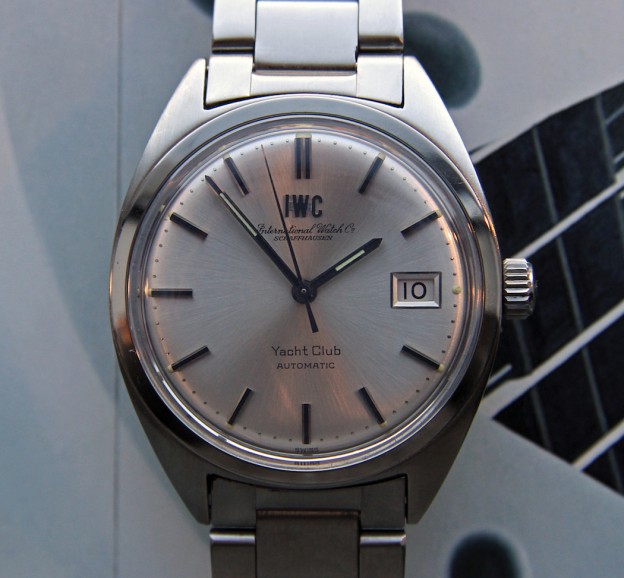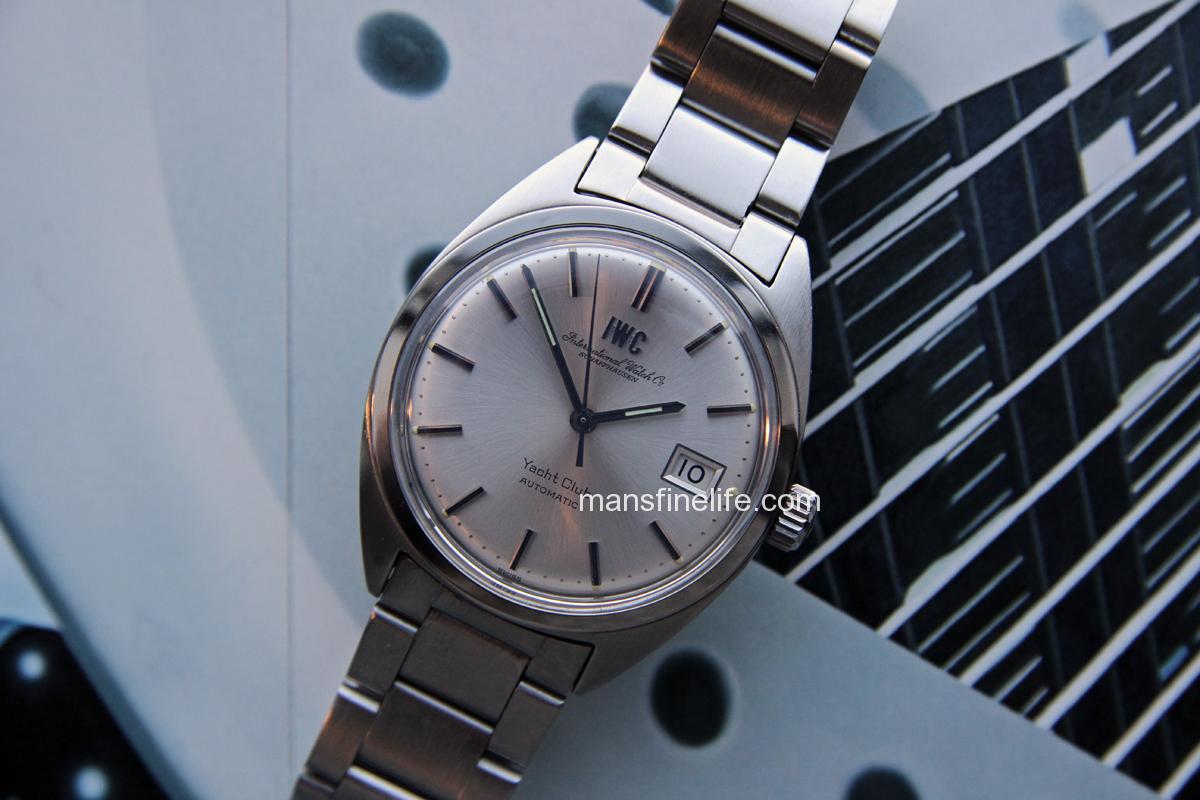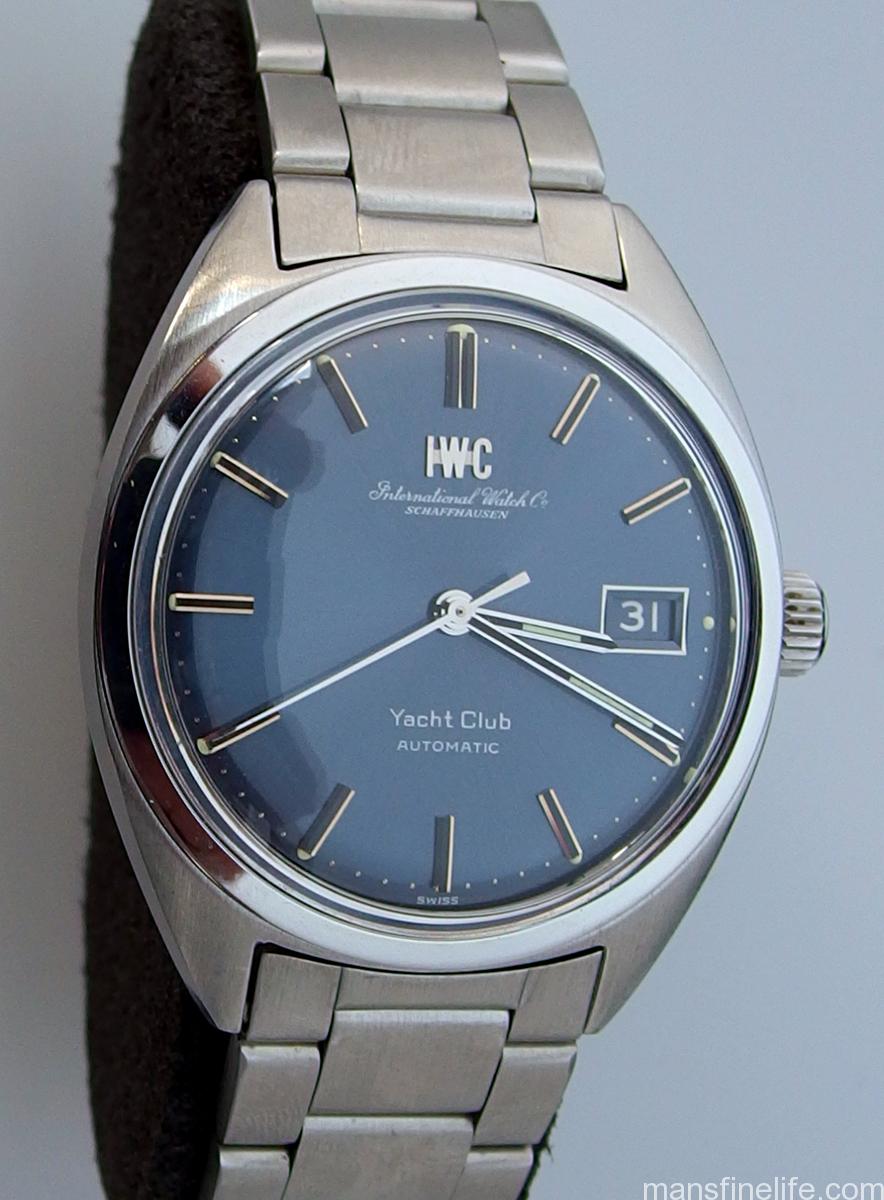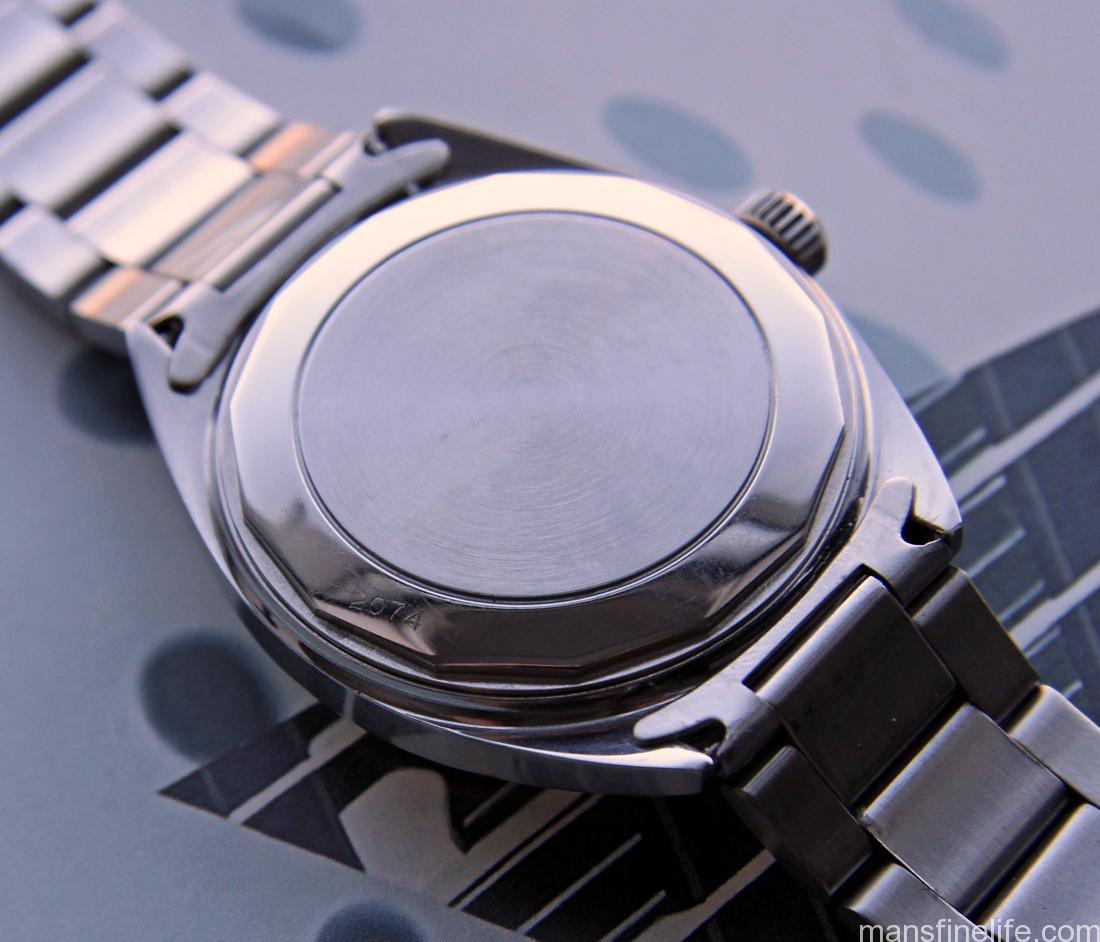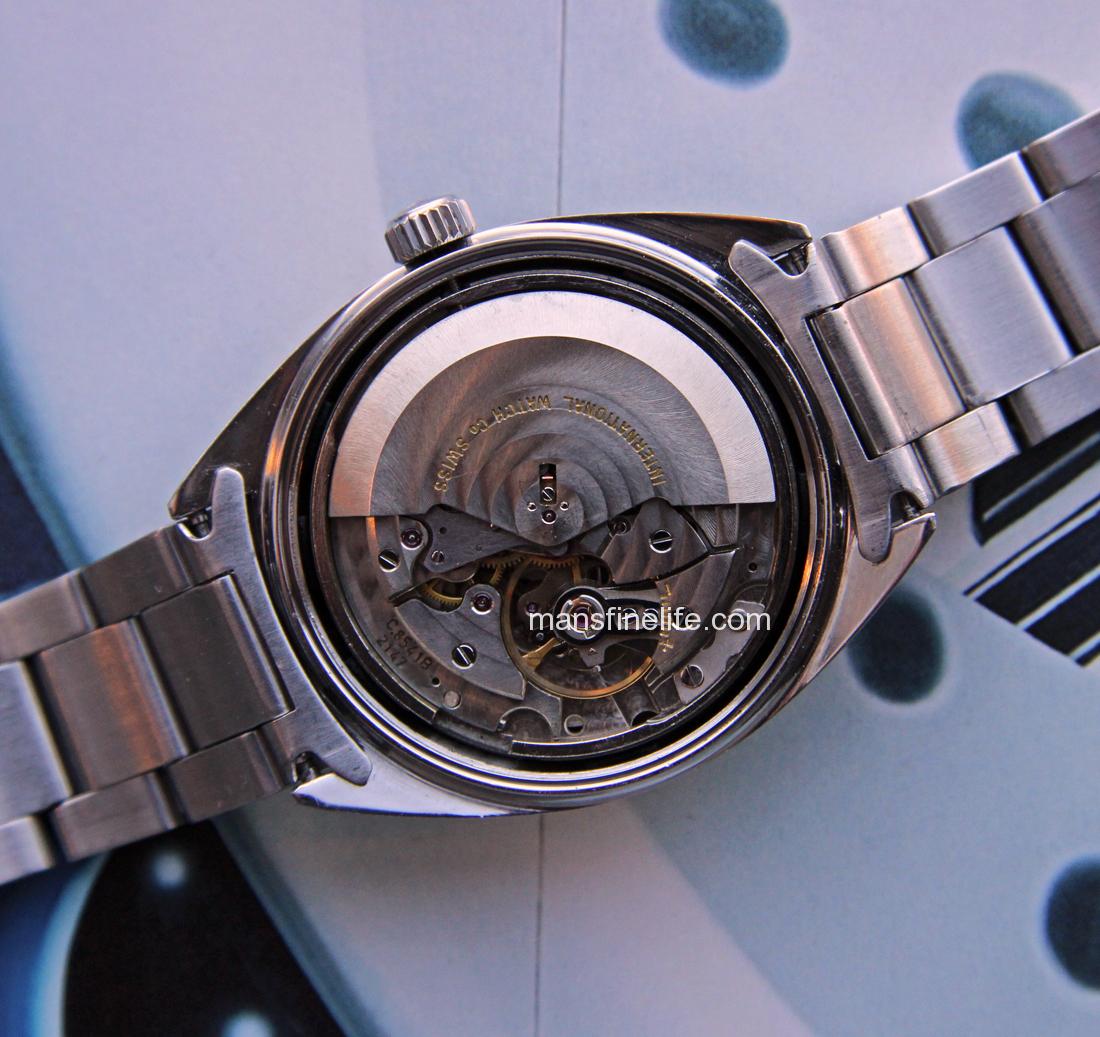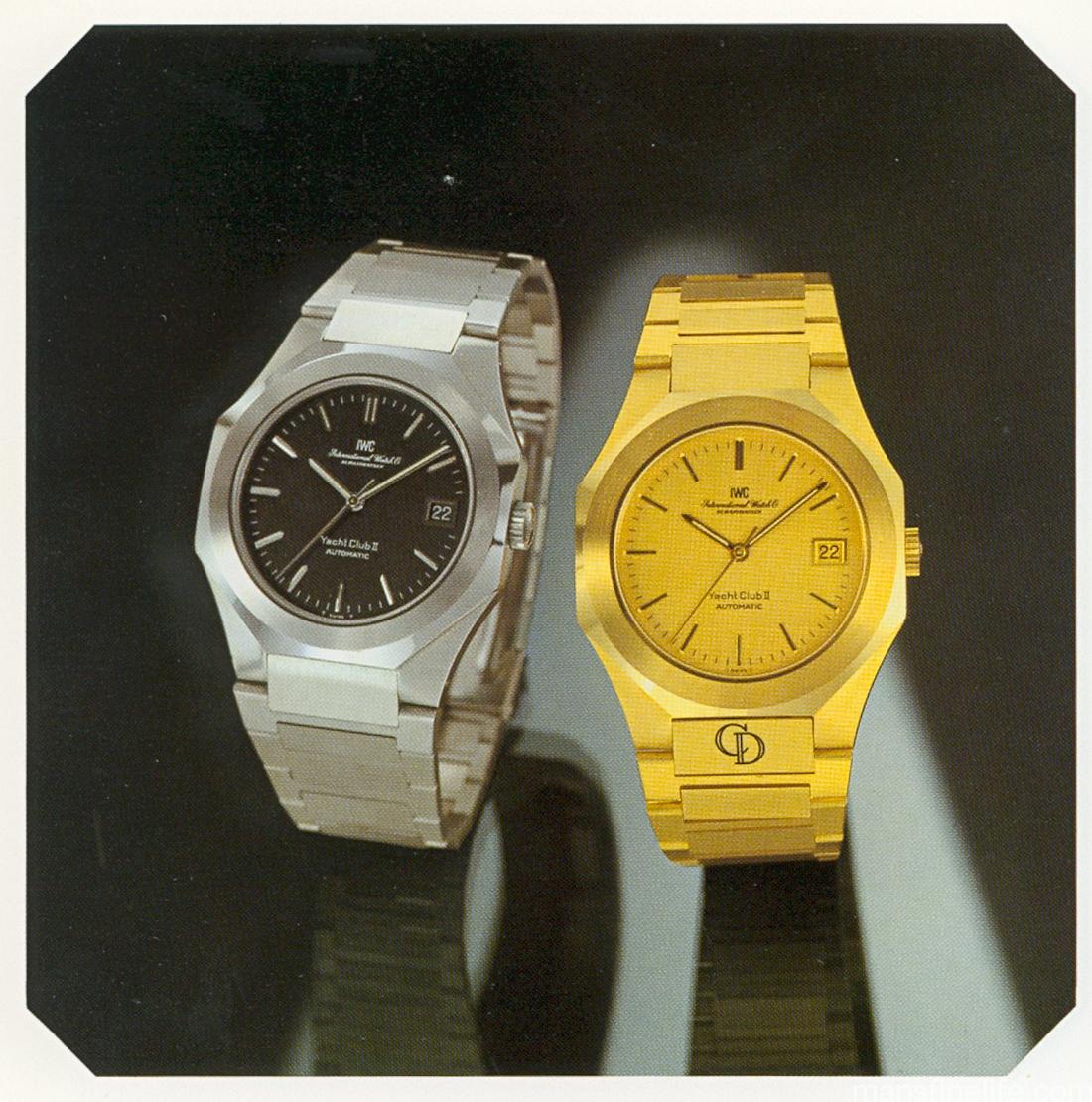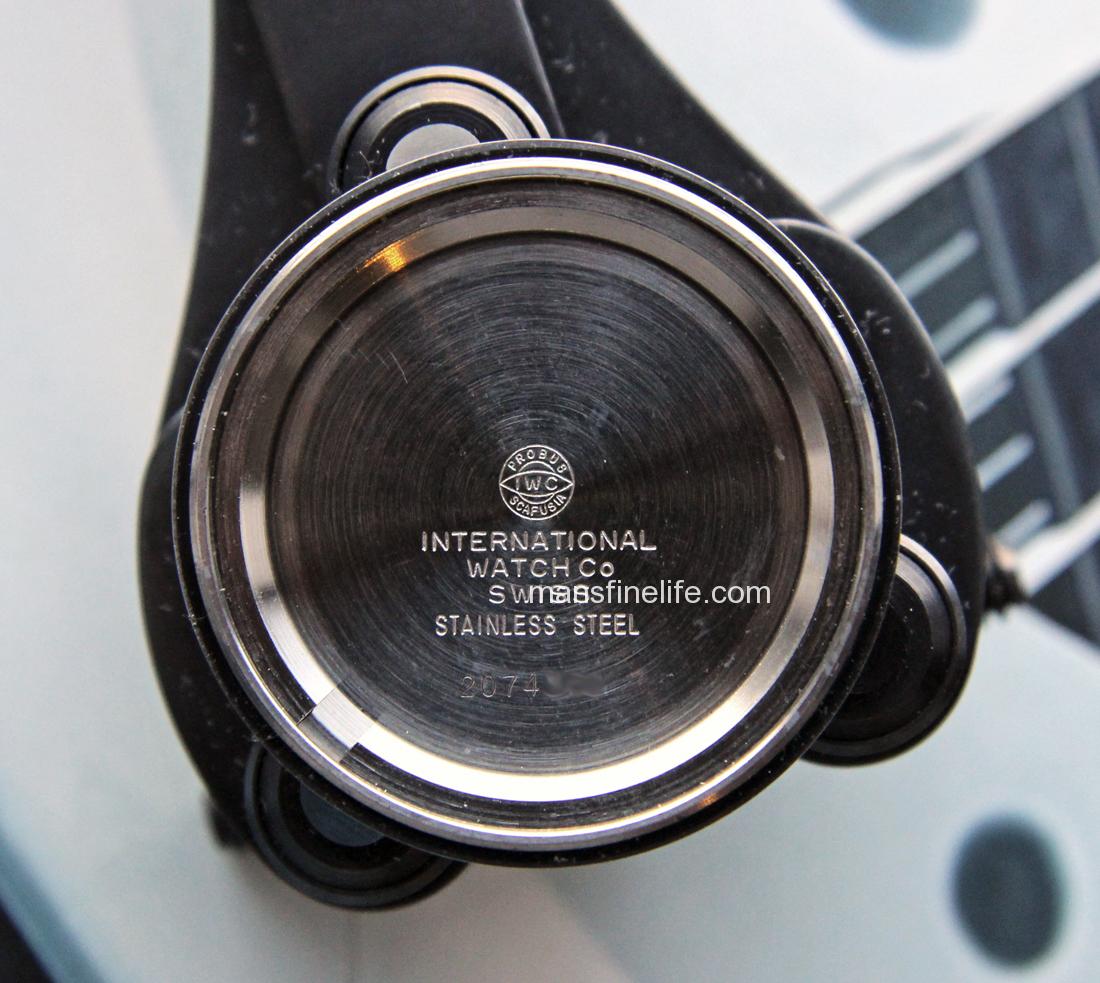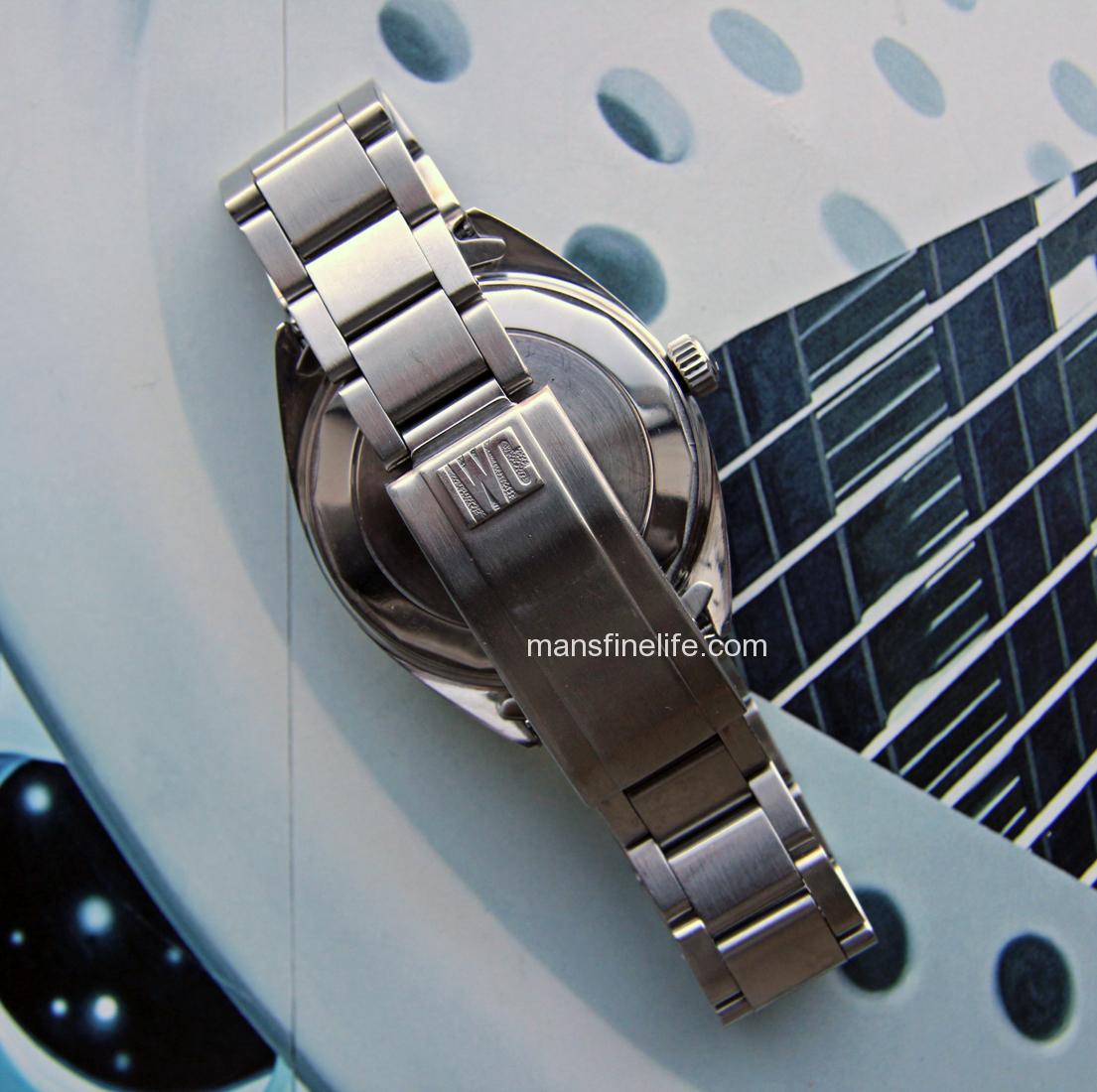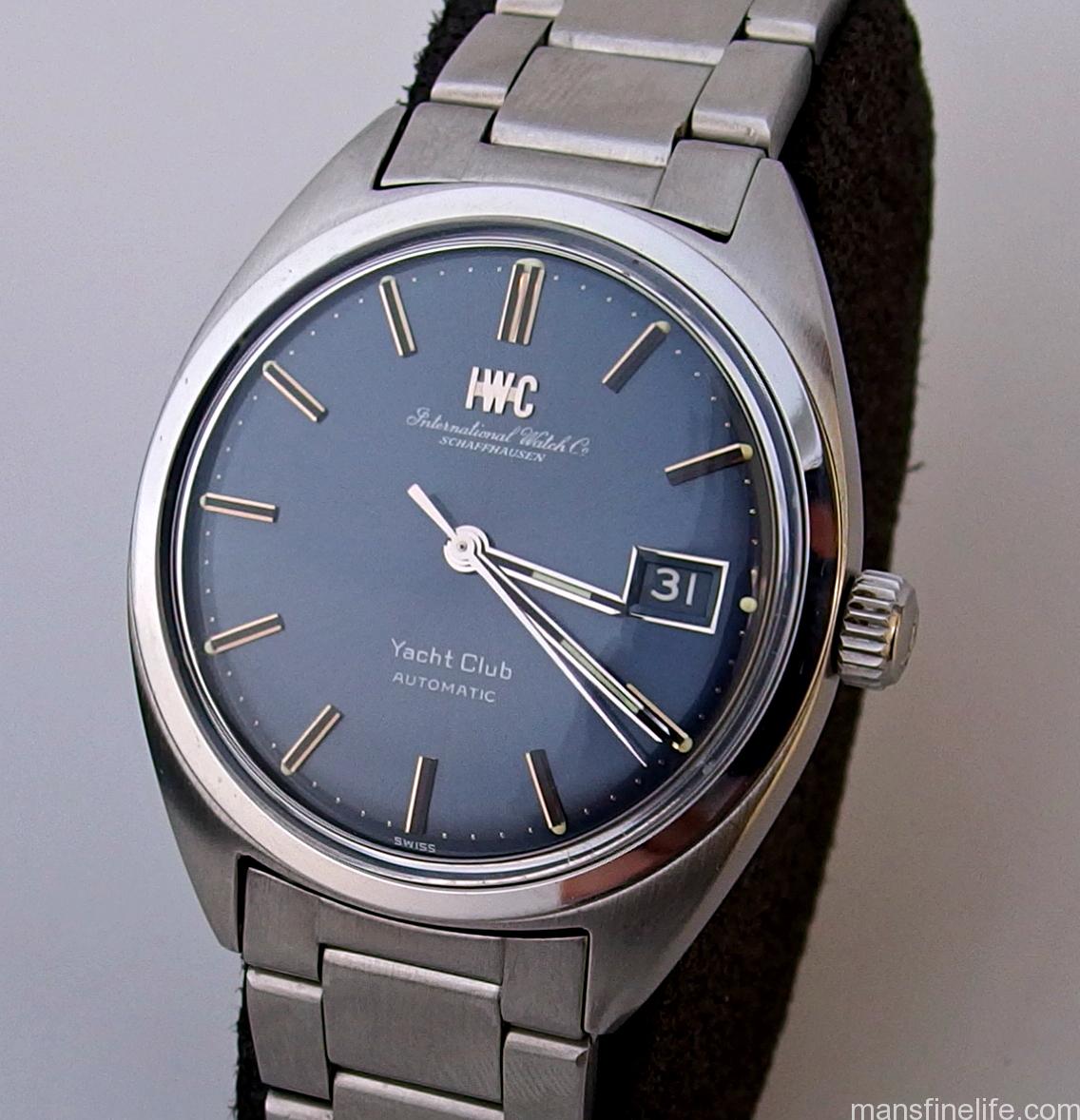One of my favorite vintage brands and one which I also feel is consistently undervalued is the International Watch Company of Schaffhausen, better known as simply IWC. Back in the day, every IWC watch had an in-house movement and their manual wind and automatic calibers were some of the best, most reliable and accurate machines on the market. With their bespoke Pelleton winding system, which was developed by the marque’s famed technical director Albert Pelleton in the early 1950s, IWC offered a solid alternative, if not also an implicit challenge, to Rolex’s longtime dominance of full rotor automatic technology. IWC continued to develop their 85x auto calibers for nearly two decades until they reached what many experts consider the pinnacle with their legendary 8541B movement. And it is the 8541B that you find in IWC’s other implicit challenge to Rolex, the beautifully designed Yacht Club model.
Debuting right at the dawn of the funky 1970s when the Swiss watch industry would go somewhat design mad chasing rapidly changing tastes and fashions, the Yacht Club manages to be at once cutting edge and traditional. Making full use of the sweeping lines of the “C”-shape case, variations of which are also found in contemporaneous Omega Constellations and Heuer’s automatic Carrera, the Yacht Club’s heavy steel case is a perfectly proportioned 36mm X 44mm. That’s much bigger than the rather medium-sized C-shape Connie and obviously not as big as Heuer’s macho racing chronograph, so where it ends up is exactly in the same size bracket as Rolex’s evergreen, the Datejust. And that’s really the best analog and probably the exact watch IWC were gunning for. For if the Datejust was the icon of a never-changing design standard, the Yacht Club aimed to offer the same sort of elegance but with a bit of an avant garde twist for the modern man.
Hence the lugs sweep inward toward the bracelet rather than projecting out in a relatively straight line like the DJ, giving the dial extra prominence and pop. And what beautiful dials the Yacht Clubs had, from the classic beauty of starburst silver to moody, manly gray to my personal favorite, an astonishing blue that changes in hue ever so subtly depending on the angle at which its viewed. Note also the classy way the date discs are not one-size-fits-all for the colored dials but rather reverse printed with white numerals on the matching color background of the dial. Nice touch! The hands are luminous with black inlay and very easy to read and there is something that really appeals about the applied IWC logo of this period. I like it better than the earlier printed full script “International Watch Co.” alone and much more than the later boring printed block lettering, which still adorns their dials today.
The Yacht Club was also a departure for IWC in that prior to its introduction they produced only a few special models with a screw back case design, such as the anti-magnetic Ingenieur and the diver-centric Aquatimer. Clearly with its evocative, upscale name IWC felt it only right to give the Yacht Club the capabilities for excellent water resistance that a screwed back would provide. And if it doesn’t have the screw down Oyster-style crown of the Rolex Datejust, it nonetheless has a very water resistant and somewhat oversized push-in “Fish” crown. In fact, the original depth rating of the steel Yacht Club was 10 atm or 100 meters, certainly up to the capabilities of some sailing and rum & tonics by the pier afterwards. The inner case also incorporated a unique design to cushion the movement within for extra shock absorption above and beyond the standard Incabloc protection.
The Yacht Club was the forerunner of an entire line of “Club” watches that IWC planned to pitch to different aspects of the luxury set, and new models included the smallish, cushion-shaped Golf Club and the oversized, integrated bracelet Polo Club. Neither of these latter two models was successful, perhaps due to the beginning of the quartz onslaught or perhaps just because of their idiosyncratic designs. As a result, the Golf and especially the Polo are quite difficult to find today and command a premium, although I have a sneaking suspicion that they are more fun to hunt than to own and wear. Likewise, IWC later introduced an octagonal Yacht Club II with integrated bracelet. Almost always found with quartz movements, the Yacht Club II is another acquired taste to say the least, but the rare specimens with automatic movements are still quite sought after and pricey. It should be noted that by the time of the Yacht Club II, IWC had moved to outsource their movements as a cost saving measure rather than continue to produce them in-house, although they did often utilize excellent Jaeger-LeCoultre ebauches before dropping down to ETA movements for even more economy later on.
But one of the joys of the original Yacht Club is that it’s not such a scarce watch and it’s also rather more universally appealing than those other quirky relatives. It also won’t cost you an arm and a leg, about the same as a classic plexi crystal Datejust in fact (the Yacht Club also features a high domed plastic crystal for that unmistakable vintage look and feel but without cyclops magnifier). Which is not say that finding one that ticks all the boxes is de facto easy. As always, original dial condition is paramount in my book and you can expect to pay a small premium for a gray or especially the blue dial (make sure those date discs match!). Next, look for an unpolished case if possible, one that displays sharp original edges and factory original satin finishing, as well as its still-distinct slim integrated polished bezel. Additionally, the back should hopefully still show the outer serial number on the edge, which can sometimes be polished out or even worn away with time (that said, the SN is also duplicated inside the back, so not a major deal breaker).
Almost as important as the first two priorities in my opinion is to find the watch on its original signed bracelet. There are a couple of variations — “rice” grain, Oyster-style, etc — but the Yacht Club, with its distinctly tapered and somewhat short lugs, looks best on its bracelet with the specific flush fit 18mm end pieces and rather less streamlined on a strap. If you’re looking at a Yacht Club sans bracelet you should be paying under $2k. Variations of the Yacht Club also include a no-date version, as well as solid gold examples, which will usually only be found on a strap and are usually $3k+. As you might expect, matching original box & papers will tend to add value and are a nice bonus for the collector although, as the old saying goes, you can’t wear ’em.
For me, the standard ref. 1811 Yacht Club with date in steel hits all the high notes. It’s got that fantastic hacking, semi-quickset 25-jewel 8541B caliber ticking away accurately beneath the substantial case. It makes a great change of pace from other steel dress watches, with just enough presence and sporty elan to make it work with jeans or a suit. And while the “C”-shape case is not everyone’s cup of tea, I really like the lines and the way it presents on the wrist. It’s unusual enough to catch the eye and a pleasure to read the time, as well as a refreshingly distinctive design. Dare I say that it’s my personal cure for Datejust fatigue?

